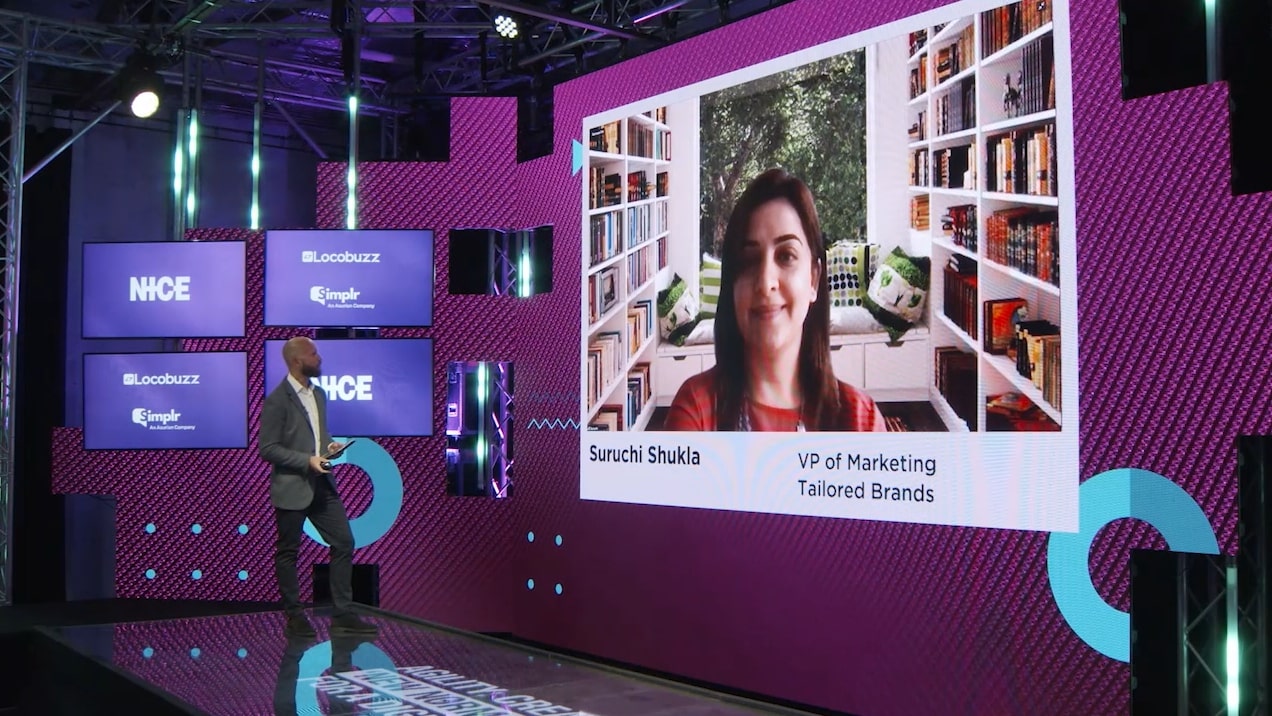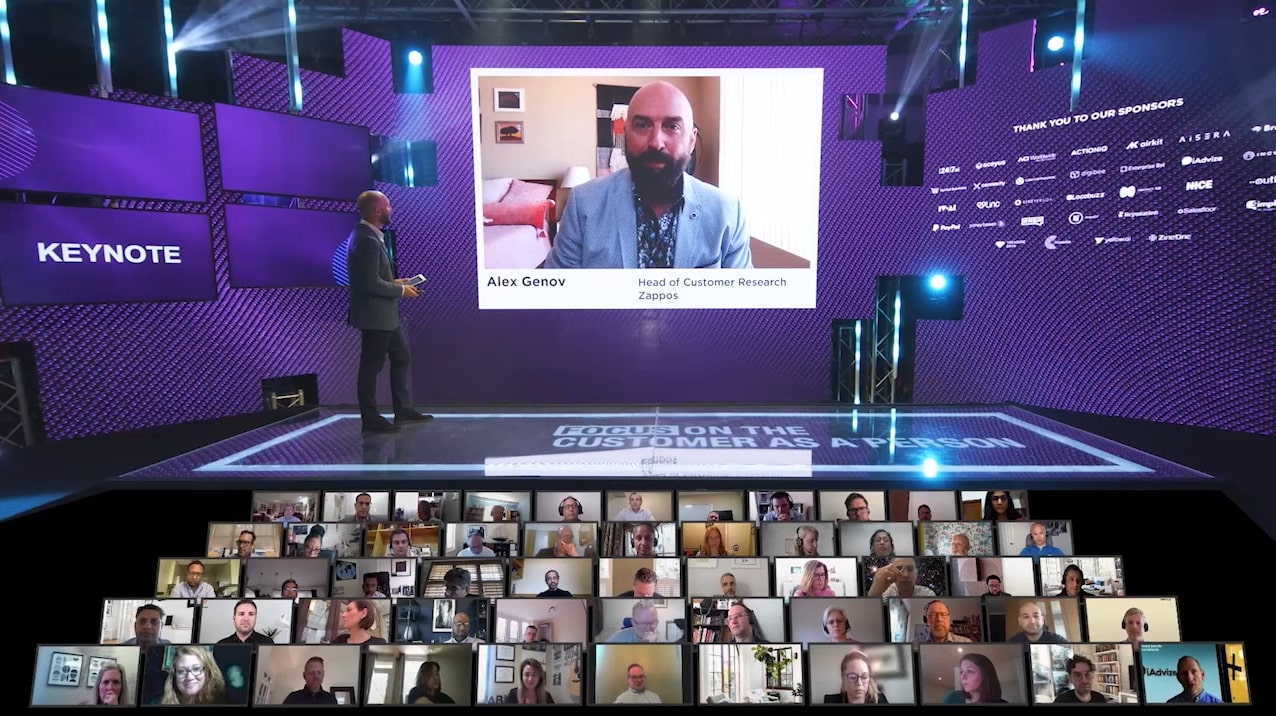Modern Customer Journey: 5 Marketing Leaders on CX Revolution in 2022
Customer experience has changed and it's time for businesses to change with it. Here's our guide on how to transform CX in 2022.

2020 really proved just how crucial it is to find new ways to reach customers, especially as the online world becomes more and more cluttered.” – Jason Test, VP of Sales for Digital & In Store Commerce, PayPal.
Customer experience has changed. Whilst many predicted a return to normality post-covid, for brick-and-mortar retail it’s not always been quite so sure. After all, for the past two years the relationship between digital and physical commerce has been inextricably shifting, naturally, customer experience has had to adapt to this ongoing climate of change forcing us to ask what does the modern customer journey look like?
Despite the apparent scale of the challenge, it will be evolution, not revolution, that enables brands to build more effective experiences for their customers. This formed the focus for executives at the CX summit earlier this year and whether it was Jason Test from Paypal on repeatable success or Alex Genos on Zappos’ focus on the human, here are the trends driving the future of CX.

1. Connecting With Your Customer
Connecting with the customer has always been critical but its importance will only increase in 2022 and beyond. This formed the focus of Jason Test’s keynote discussion during May’s CX summit. Working as Vice President of Sales for Digital & In Store Commerce at PayPal, Jason is invested in all ongoing innovation efforts for the finance tech provider whilst simultaneously keeping the consumer at the center of the modern customer journey. This approach to customer service was of particular importance for both Jason and PayPal when navigating the constraints of the pandemic.
This was a period of substantial stress even for some of the world’s largest and most proven organizations a point which Jason acknowledged. On the difficulties, he noted, “shopping journey’s have become a lot more diverse, a lot more fragmented, and quite frankly many omnichannel retailers have struggled to adapt to keep up with these changes. The ability to embrace change and innovation in the face of adversity is what will really separate the thrivers from the survivors.”
To avoid becoming the latter, retailers must be aware of the shifting nature of their industries at this time. For commerce, Jason’s team is working on the basis of five foundational predictions:
- Partnerships: Many of the issues facing businesses today are caused by a lack of cooperation outside of our group, this will change as “strategic collaboration and consolidation of business are guaranteed.”
- Permanents: Many of the solutions borne from the pandemic will become embedded as points of convenience and preference. “Pickup and delivery is here to stay.”
- Prolific: New ways of quick-and-easy shopping will emerge as shoppers return to stores with new mindsets and expectations. “There will be more self-service choices.”
- Powerful: The retailers pulling ahead will be those which can tailor their offer quickly enough to keep up with the pace of change. “Product customizations and seamless personalized experiences across all channels will become a differentiator.”
Pivotal: Planning is essential but there will always be unforeseen evolution, meaning that agility and imagination will be increasingly valuable going forward. Notably, “digital commerce experiences will continue to accelerate.”
Ultimately, Jason states that “it all comes back to having a connected and intelligent experience, which requires you to know your shopper and their online and in-store behavior.” What might sound like a simple statement is the principle behind PayPal’s continual reinvention, all of which has helped them to dodge and surpass competitors, technology, and expectation. The time to change is now and in closing, Jason commented that, “2020 really proved just how crucial it is to find new ways to reach customers, especially as the online world becomes more and more cluttered.”

2. Data & the Customer Experience
Throughout 2020 we had to accelerate our focus on digital engagement; this has lasted into 2021 and we can expect it remain in our immediate future. However, this isn’t to say that we should deviate from providing more personalized experiences in store. To this end, marketers have to lead with a message and product that resonates personally with customers, both in terms of their unique needs and expectations. Doing so will be essential for the modern customer journey.
Data will be key to unlocking this experiential agility and consequently, for Suruchi Shukla, Vice President of Marketing for Tailored Brands, it’s a core business priority. In the simplest sense, businesses need to gather data that tells them what their consumers are thinking, but more importantly, what they’re looking for. For example, Suruchi was keen to note that even her own buying habits had changed, stating, “I value convenience over everything now, I don’t want to go into a store and spend time trying things out”. Data will be our most valuable asset when determining where our consumer wants to shop and how they want to be reached.
Data has been our North Star for years for this reason, but Covid has led to a step change. As Suruchi notes, “the last year forced us to find a new level of empathy. The world around us is shifting quickly and I realized that I have a lot of data, but I don’t have enough to make it insightful or actionable”. In line with this, our businesses need to ask tough questions of data. We need to start thinking “how robust is our data gathering and how robust are our analytics to help drive insights from the data?”
Our ability to drive the data we collect towards insights is pivotal. On one hand we have the ability to make strategic, global decisions based on numbers, but on the other we have the influence of intimacy between a buyer and seller meeting in person. Businesses need to consider the value of the physical as, in truth, the “biggest benefit for a user going into a brick-and-mortar store is the one-on-one experience.”
Whilst data isn’t diminishing in importance, it needs to reach further, to help retailers to better support user purchasing needs. The promise of this is obvious, but as Suruchi put it, “imagine you come into a store and a set of products is recommended to you, but at the same time we also populate and generate a personalized offer for you.” To deliver on this promise, the advice for 2022 is clear, we must leverage data to provide experiences that engage and empower for the modern customer journey.

3. The Customer as a Human Being
Going back to basics will be key to future success and in his role as Head of Customer Research for Zappos, Alex Genov is using his passion for research, design, and innovation to provide human experiences to the business’ customers. In 2022, we must recognize that “we cannot hope to win customers’ trust and loyalty if we do not understand them as human beings.” Loyalty, in particular, will be essential to foster, as Alex put it “loyalty matters because it leads to business results. When you don’t meaningfully understand your customers, it’s easy to treat them like statistics.”
Alex also echoes Suruchi’s thoughts on the need to use data to create moments of magic but that there is currently an imbalance, “on the one hand, we are enamored with big data, averages, statistics, algorithms, and on the other hand we want to create memorable and emotional experiences for individuals in the modern customer journey. These two trends are in conflict with one another and only companies that resolve this conflict will be able to build a customer-centric culture that leads to long-term customer loyalty.”
This is where going back to basics has to come in. The concept of ‘going where the competition isn’t’ rings true whether it’s new technology or old techniques and where everybody has moved on from core principles to try to stick their neck out, we should ask whether it’s worth returning to a simpler approach for each respective business.
“Nowadays, a lot of big brands have whole advertising campaigns built around the concept of ‘wow’, and every company is asking you ‘how can I exceed your expectations?’”. Increasingly though, we’re getting tired of being sold to this way, and when a brand is dependent on, “what others say about you when you’re not in the room, not what you say about yourself in ad campaigns,” it becomes increasingly important to level with them in a human way. Alex’s advice here is equally applicable to rebellious start-ups as it is to market leaders, as it focuses on the fundamentals. The modern customer journey is changing, but at the end of the day a human will still be a human.
Above all, “you need to find a way to talk to your customers and understand them on a deeper, psychological level. It all boils down to understanding the psychology of the consumer and understanding that not all consumers are the same.” This intention must bleed into every element of the modern customer journey and those that realize this early will quickly outpace their competitors.

4. The Evolution and Revolution of CX
The landscape of retail is changing rapidly and companies must innovate and adapt to avoid becoming obsolete. But, bringing transformative innovations to market is not just about having the next big idea. Many world-changing ideas are abandoned prematurely due to organizational roadblocks and lack of executive support or budget. How then, can we differentiate between the duds and the truly dynamic?
Kyle Nel, founder of Lowe’s Innovation Labs, helps teams to avoid these all-too-common pitfalls, pushing retailers past incremental improvements toward meaningful change. The problem, he says, is part nature, part nurture, noting “we’ve over optimized for knowledge acquisition and under optimized on how to make better decisions and on how to get people to work together more efficiently”. Additionally, he added that, “we’re not changing very much, but what is changing a lot is the hardware and software around us. Though we’re really good at minimizing risk and despite that having served us well over the eons, these are not blips in the radar, these are seismic shifts and trends that will continue over time. Individuals can either embrace that or let it be their demise.”
To combat this, and institute an effective model for change, companies must:
- Build a strategic narrative: Or in other words, “an actual story about where you’re going to and what challenges you’re going to overcome to achieve something.” Think of it as a way for your team to align themselves to something common, relatable, and measurable.
- Break the bottlenecks: Essentially, we need to pinpoint the “ways that things get accomplished in every organization to then understand how your organization works and tackles the challenges accordingly.” Every company is different but by finding the people and defining the methods by which things get done, there are tangible options for change.
- Set new KPIs: We also need “new measures of success for figuring out whether the things that we’re doing that’re new are also good.” The incumbent goals may not align with the new vision, so dedicate time and thinking to their review.
When creating a team to help execute on this vision, companies must look for these skills:
- Negative Capability: Referring to a concept defined by poet John Keats this describes people “that are comfortable in a state of uncertainty.” Utilizing those who are able to move into unfamiliar spaces will maintain momentum in new or untested environments.
- Chaos Pilots: You also want “people that can take that uncertainty and turn it into something that is useful for the rest of the organization.” These individuals can not only lead confidently on unclear paths, but translate confusion into comprehension for others.
- Personal Transformation Narrative: At the end of the day, “people in your organization must understand that what they’re doing matters individually to them. If it doesn’t, they will become disaffected.” Like the strategic narrative, this brings home the reason for being part of a transformation, but on a level that matters personally, not organizationally.
Kyle’s universal concepts are pathfinders for those breaking into something new, whether that be in the immediate post-pandemic or whilst leading towards 2030.

5. CX for the Future
Even once we’re focused on the putting the consumer at the center of the modern customer journey, there are still organizational barriers to providing seamless consumer experience. The need for agility has never been greater, and this will be doubly true as consumer expectations continue to evolve. In line with this, omnichannel and all that it encompasses, needs to reflect the changing retail and consumer landscape, but what does that mean?
Omnichannel must evolve, or at least, the way that we think of it should. Ruth Crowley, Vice President for Merchandise & Brand Strategy at Hudson Group, echoes her contemporaries in this regard. Beginning her keynote by stating, “we have to change the mindset a little around omnichannel to think about it as a 360 degree customer experience. We need to put the customer at the center of everything we do.”
The customer has always been the priority, but Covid has helped to institute a new global philosophy, one which values the time of the end-user above all else. After a year of lockdowns and restrictions, the modern customer journey must avoid experiences and outreach that do not value the time or add value to consumers. A clunky retail experience will see support for your organization slacken rapidly in future so now really is the time to grasp for solutions and improve.
As ruth adds, “we have to be a comparable, pleasurable experience for the customer that’s based on their mindset, not based on ours. The minimum acceptable levels have been raised.” But Ruth’s words, while indisputable, posit a challenge which many will struggle to overcome because “most companies are still guilty of digital Darwinism in that they just can’t physically keep up with the pace of digital technology.”
Based on her extensive experience as a leader in retail leadership, Ruth’s advice was also to pause and simplify, stressing that, “the future is now and when you consider that 11,000 stores closed last year and 40 major retailers went bankrupt, it’s doubly as important”.
To progress meaningfully, businesses need to evaluate the forces that drive them. As Ruth suggested, we must “take a look at what we have, where we want to go, and then don’t try to do everything, but take meaningful and relevant steps with technology so that we can analyze the data and position the company for the long-term.”
Post-Summit Reporting – CX Summit 2021
GDS’ CX Innovation summits bring renowned senior marketing and sales executives together to connect and provide insights. If you are a leader in the space, don’t miss out on the opportunity to engage with other Chief Executive, VP and Director Level Leaders who are driving change both now and into the future.
Not simply comprised of the keynotes we host, summits also provide interactive Q&A and polls as well as breakout sessions, roundtables and 1-1 business meetings with executives. Across each of these, we asked leading marketing executives and providers about their top spending focuses and at what stage in the process they were in implementing these transformation initiatives, the results of which can be seen below.


The three big hitters in CX budgets this year, which together make up more than half of their total spend, were all united by a single concept – how smart devices and physical experiences link up. Resonating with what so many of our speakers told us, this is even more evidence that the temporary digital solutions put in place during the pandemic are here to stay. Not only that, but also retailers are investing serious capital in perfecting the experience.
With only 27% of the budget dedicated to in-store experiences and merchandising (which almost certainly will include a significant digital element), what does the future hold for brick and mortar stores which resist transformation?
The Future of CX NA – In Review
Despite the vast to-do list that many leaders left with following the GDS CX Summit, they can at least be comfortable with one thing: the tasks ahead are familiar if fundamental. CX’s slow departure from customer-centricity may have been a product of circumstance in a world of big data and international markets, but a return to the heart of marketing will feel like a homecoming for most.
The membrane between online and offline shopping is going to become less defined soon. As customers return to stores with strong opinions and expectations around what their retail experiences ought to look like, it’s clear that the brands that excel in this brave new world will be the ones who listening to their customer closest.
GDS Summits are tailored 3-day virtual event conferences that bring together business leaders and solution providers to accelerate sales cycles, industry conversations and outcomes. Regarding the CX Innovation Summit 86% of Delegates said the overall experience of Digital Summit they attended was either Above Average or Excellent and 71% of Delegates said the Digital Summit provided them with actionable outcomes to support their current initiatives.
For more, click here to hear from attendees on how GDS has helped them to achieve their business outcomes.
Continue the debate at GDS’ CX Innovation Summits where we bring together senior marketing executives who are actively seeking to share, learn, engage, and find the best solutions.




